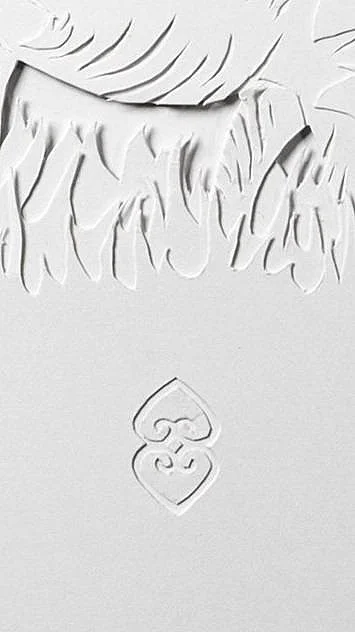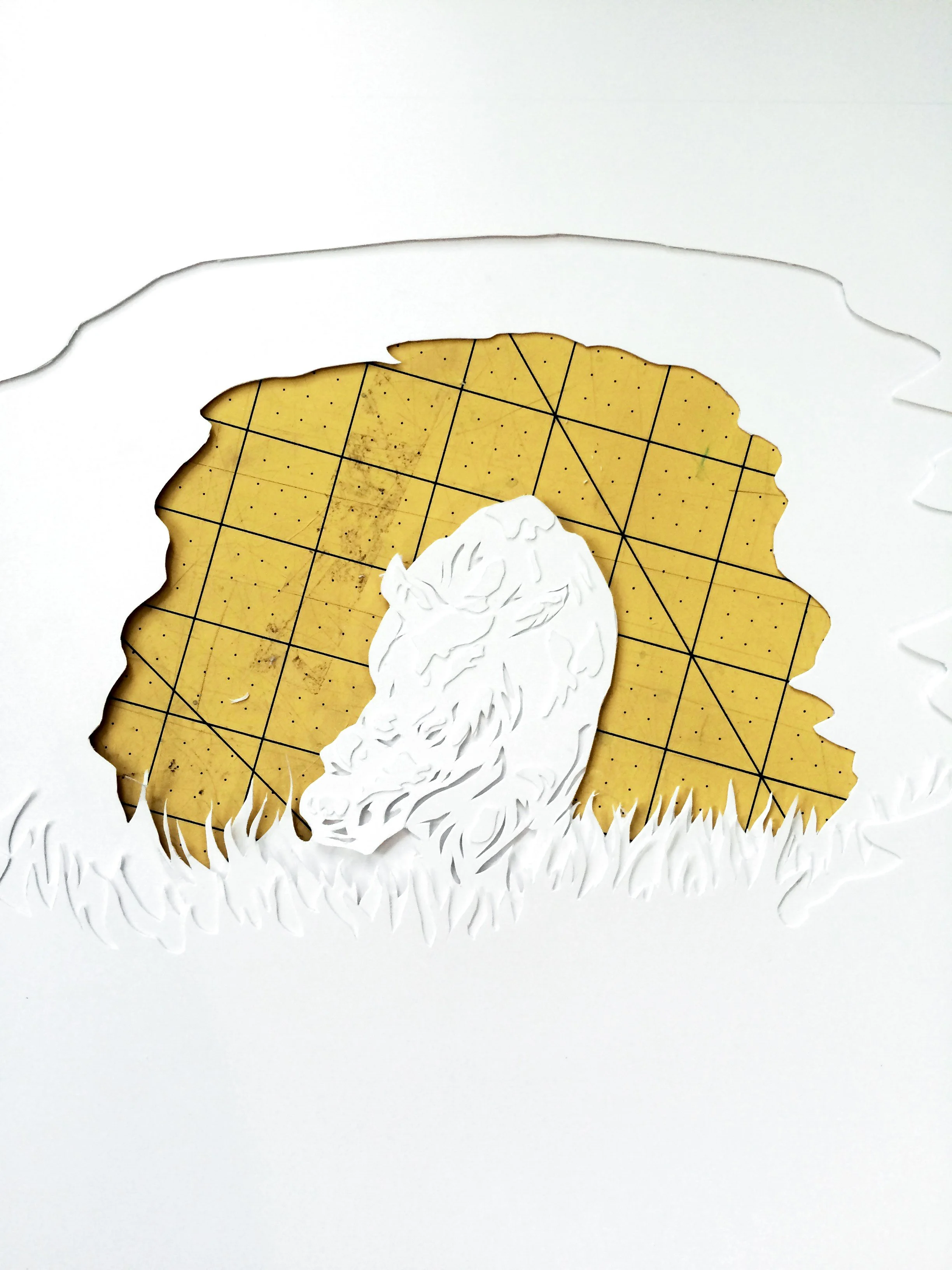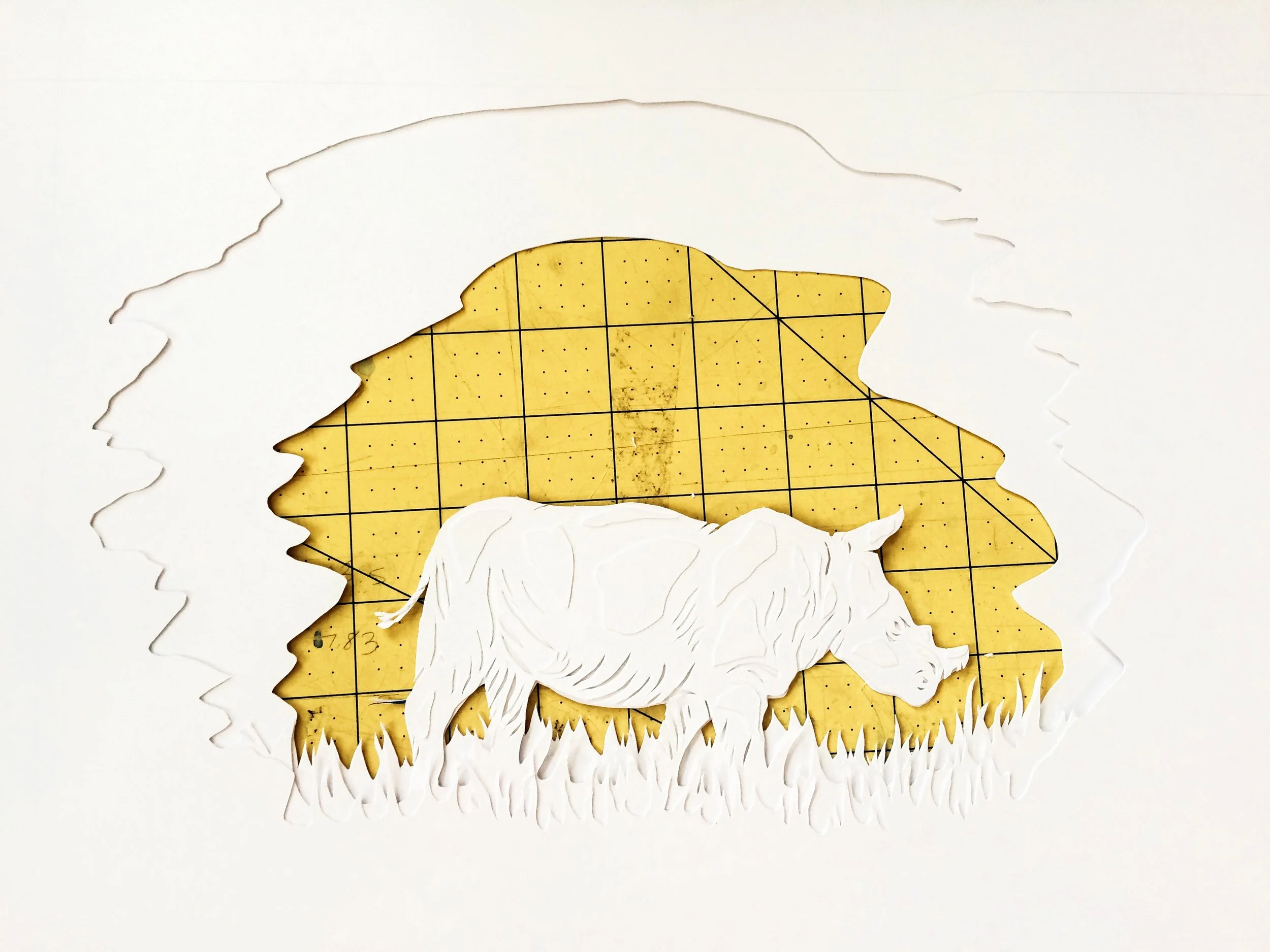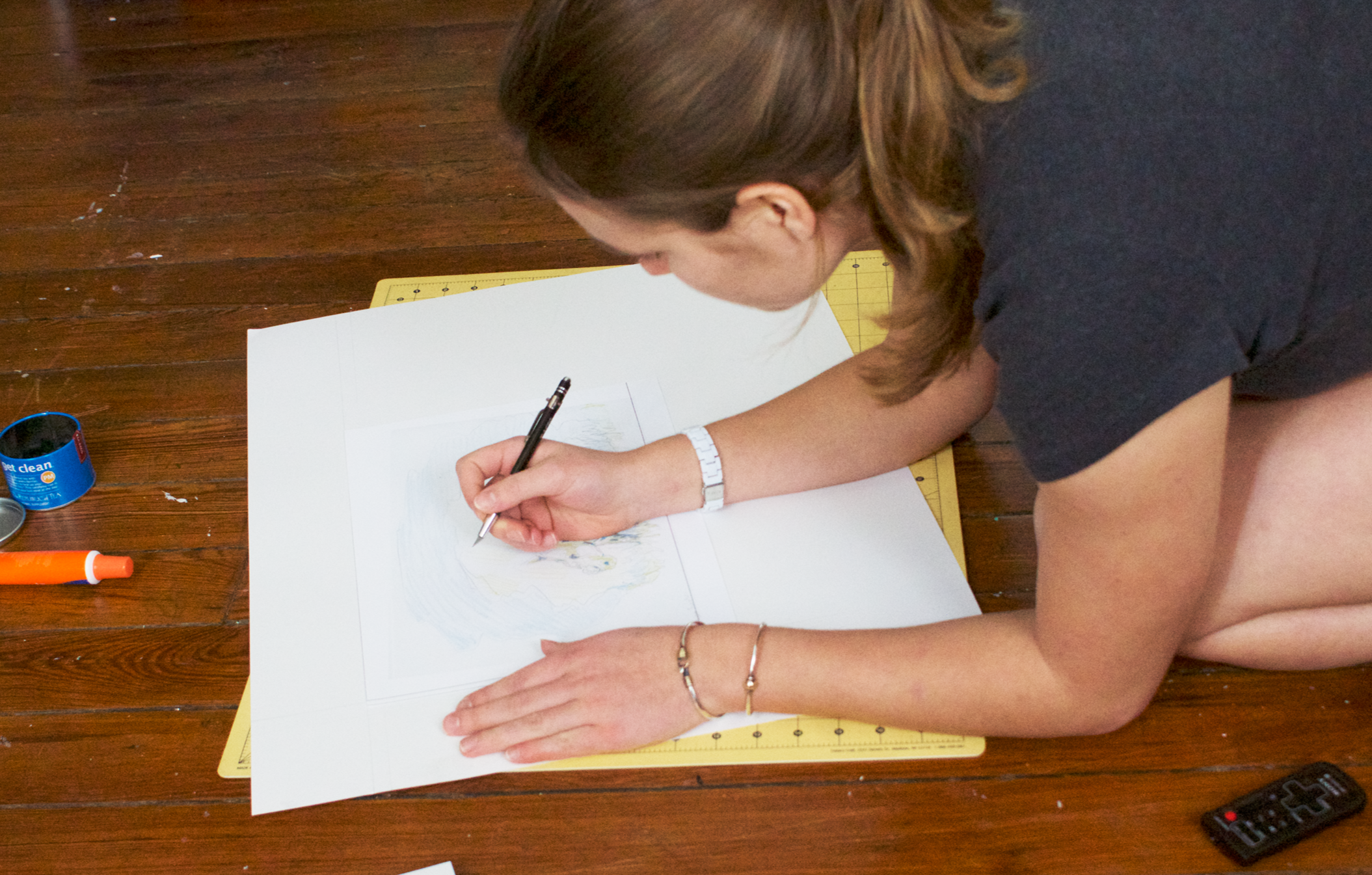Papercut Rhinos
Image and process highlights from the making of my 2016 series “Traces”.
The project is an epitaph to the last three remaining Northern White Rhinoceroses in the world at the time: Najin, Fatu, and Sudan.
Each layer for “Traces” was done by taping down the color coded study of that rhino to a sheet of bristol, using the guide to cut through both papers. Smaller paper pieces that would be “floating” in an upper layer were set aside in the tin lid in order to be attached later.
Each Rhino was illustrated with 4 layered pieces of bristol paper to finished sizes of 10”x10”. The faint lines and shadows were intended to depict the faint presence and survival of the species, with 3 strategically cut layers of bristol as a representation of how these 3 individuals were all that were left to define them. And yet, in the cutting of the paper, it felt something similar to carving into stone, hopefully preserving them in memory.
In 2018, Sudan, the last remaining male Northern White Rhino, died. As of now, only Najin and Fatu survive the species.
The layer order from base to top was yellow, blue, green/grey, and white.
Incorporated below each rhino is a different traditional Adinkra symbol, chosen as a plea and as a lesson.
Adinkra are symbols from Ghana that represent proverbs, concepts, and aphorisms, orginating from the Akan culture and kingdoms. While the Northern White Rhinoceroses’ habitat as we know it did not extend into West Africa, and therefore Ghana or the Ivory Coast, I was moved by the powerful symbolism of Adinkra, its influence, and importance. I therefore decided to incorporate it into my project.
In perhaps the same way the legacy of the Northern White Rhino has been protected and maintained in the last decades, Adinkra too is an important legacy, a cultural tradition and expression of heritage, being devotedly honored and protected today.
My use of Adinkra was not an attempt to simplify or collapse cultures within the African continent. I have included educational resources below.
Read more about Adinkra Cloth traditions: https://fashionhistory.fitnyc.edu/adinkra/ https://www.africanbeadsandfabrics.com/knowledge/adinkra-cloth/
Read more about Adinkra symbols: https://www.adinkrasymbols.org/#gsc.tab=0
Below Najin is Asase ye duru meaning "the earth has weight," representing the divinity of the earth in sustaining life.
Below Fatu is Funtunfuneyu-denkyemfunefu , an image of the Siamese crocodiles and a symbol of political unity. It is associated with the proverb "they share one stomach yet they fight for food".
Below Sudan is Agyinduwura , which symbolizes faithfulness, alertness, and dutifulness. Life is a delicate balance and we must understand that we are not separate from the rest of the world.
Cutting process and layer test for Najin










